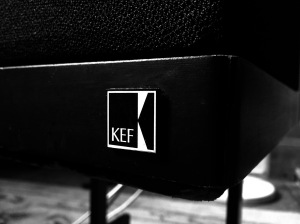Audiostream has posted a new article on the Objectivist/”Subjectivist” debate.
(I have to be careful to put inverted commas around the word “subjectivist” because, as an earlier commenter pointed out quite rightly, “subjectivists” rarely justify their name; in reality they are usually claiming that their subjective experiences are a superior form of objective measurement).
In summary, the new article says “Hey, everyone’s views are valid. Let’s not too get dogmatic, and just have a beer”. I think this misses the point (or several points). For me, the biggest ones are these:
- Measurements are always incomplete, and are just part of the picture; this seems to be misunderstood by many people, who think that there is a supernatural mystery as to why supposedly good measurements don’t always correlate with good sound. I don’t think there is a mystery.
- Subjective experiences are always affected by spurious factors; if the measurements of what comes out of the speakers show substantial deviation from the signal (i.e. are ‘bad’), this, for me, trumps the subjective opinion. But as mentioned above, if the measurements are ‘good’ they may still be incomplete.
- Let’s only start worrying about the above when we’ve designed the system to avoid the obvious errors as best we can. This is neither objectivism, nor “subjectivism”, but rationalism. For reasons of tradition and ‘folk intuition’, this may be rare in the world of hi-fi.
- I would be only too keen to hear people’s subjective experiences if they are referring to something measurably out of the ordinary and arguably good; less so if they are describing differences between digital cables that, rationally, cannot be affecting the sound. Some people do it all within the same article!

I am so pleased to have found your blog. It is such a pleasure to find someone talking common sense and science and measurements when it comes to HIFI.
I have been avidly reading the “specialised” press back when i was about 15 (that is 30 years now) and i became increasingly frustrated with all the flowery language and the complete absence of the scientific approach, not to mention, common sense.
Thank you once more!
LikeLike
Thanks for the great comment. Same here regarding the hi-fi press.
(got to go out, maybe add more later)
LikeLike
Not sure if you have seen this, I inly seen it today: http://www.engadget.com/2016/05/03/bowers-and-wilkins-acquired-by-automation-startup/ The traditional “hifi” manufacturers who are basically been iterating on the same technologies since the 50’s are left by the wayside as new ways of enjoying music, and addressing well known reproduction issues, are addressed by emerging companies that adopt new technology and closely follow what consumers want _____________________________ Babis Sfougaris
LikeLike
Thanks for that. Fascinating to know that even in this day and age, a high end hi-fi manufacturer can employ 1100 people and be worth as much as £122m! Babis, what do you think their first new product should be?
LikeLike
It is an interesting question but I think that it has to be a multi-room speaker system that is controlled by a central hifi-hub that is controlled by mobile apps.
To my (admittedly very cynical) eyes, B&W was at the very end of their traditional iteration cycle with the absurdly priced 803 d3. There is nothing particularly proprietary about using FEM to optimise the build of a “classic” speaker and what they are doing can be recreated in USA, UK, or China and farmed out for manufacturing from a drastically lower cost base.
Thus, in a word that seems to be increasingly interested to buy the likes of SONOS and play music from the comfort of their mobile phone, they are relegated to live at the rarified margins of ultra-hifi where margins are fat, but volumes are pitiful.
Meanwhile, even those niches are under assault from the likes of active speaker manufacturers who employ DSP to correct for all the traditional faults of “speaker placement” and the likes. I very much doubt that they have any meaningful expertise in that that area either (or the times to acquire them).
Meantime, for the emerging, “smart” players who have access to funds and (more importantly) are not afraid of upsetting the existing norm, their fear is commoditisation: they don’t have an established brand and their products are hard to command any loyalty. Thus the interest in the likes of B&W who command respect, have “heritage” and prestige, and can be positioned as premium offerings (with the corresponding margins).
I see this becoming the dominant trend for all those heirloom manufacturers who had developed cozy lifestyles on the backs of gullible “audiophiles”.
My 2 cents anyway!
LikeLike
That’s brilliant – thanks. I just don’t have my finger on the pulse of this business like you do. I think in common with many people, I feel a nostalgia for the heyday of hi-fi in the 1970s, and companies like B&W still represent that. I have never heard any of their snazzier models, but I did briefly own a pair of their more downmarket offerings.
Ultimately, I think I am a ‘purist’, so I don’t have any problem with the concept of a pair of large speakers that are not part of a larger integrated home entertainment system. What makes me yawn, however, is the look of the things, the high tech chassis, carbon fibre port, diamond tweeter and so on. I can’t imagine buying anything so boring when – as you point out – there are such interesting DSP-based alternatives on offer.
LikeLike